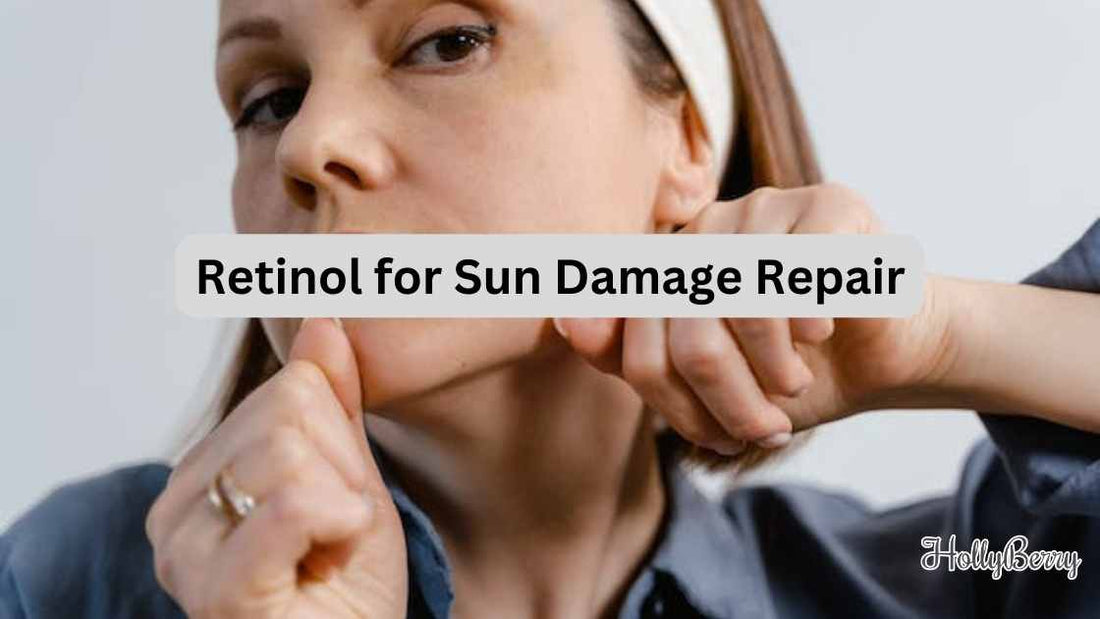
Retinol for Sun Damage Repair
Share
Unveiling Effortless Skin Revival Techniques

Retinol, a derivative of vitamin A, has gained prominence for its role in skin health, particularly in addressing the signs of ageing and photoageing. This over-the-counter retinoid is known for its ability to stimulate skin cell renewal, which plays a vital part in repairing and maintaining healthy skin.
Extensive research supports its effectiveness in reversing some effects of sun damage, which presents as fine lines, wrinkles, and hyperpigmentation. Its function in skin repair involves the modulation of gene expression, boosting collagen production, and enhancing the skin's natural regeneration processes.
While the skin's capacity to heal from sun exposure-induced damage was once thought to be limited, scientific studies have demonstrated that certain interventions can facilitate repair to some extent.
In this regard, topical application of retinol has been found to influence both sun-protected and sun-exposed skin positively. Regular use of retinol formulations, such as creams and serums, can lead to improved skin texture and a reduction in the visual signs of sun damage.
It's essential to understand how retinol works and consider the nuances of its application for optimal results. Factors such as concentration, formulation, and frequency of use must be carefully balanced to maximise benefits while minimising potential irritation.
Although retinol is widely accepted in dermatological practice for sun damage repair, it is not a one-size-fits-all solution. Different skin types and levels of sun exposure require tailored approaches to incorporate retinol effectively into skincare routines.

Order our Retinol serum from our UK store
Understanding Retinol and Sun Damage
Retinol, a derivative of Vitamin A, plays a pivotal role in the repair of sun-damaged skin. Its efficacy stems from its ability to stimulate skin cell renewal and collagen production.
Mechanism of Retinol in Skin Repair
Retinol aids in reversing sun damage by promoting the generation of new skin cells and enhancing collagen synthesis, essential for skin's youthful structure. Collagen is the structural protein in the skin that diminishes with age and UV exposure, leading to wrinkles and other signs of aging.
- Stimulates cell turnover: Retinol encourages the shedding of damaged skin cells.
- Boosts collagen production: It increases the synthesis of new collagen, reducing wrinkles and improving skin texture.
Effects of Sun Damage on Skin
Sun damage is primarily caused by ultraviolet (UV) radiation, resulting in photoaging, which is characterized by changes in skin texture, pigmentation, and the overall integrity of the skin.
- Photoaging: Prolonged UV exposure leads to fine lines, wrinkles, and hyperpigmentation.
- Loss of elasticity: Degradation of collagen and elastin fibres makes the skin less pliable and more prone to sagging.
Practical Guide to Retinol Use
Retinol, a vitamin A derivative, is widely recognised for its efficacy in repairing photodamaged skin. A practical routine incorporating retinol can significantly aid in rejuvenating sun-damaged skin.
Choosing the Right Retinol Product
Selecting an appropriate retinol product is crucial for optimal results. The marketplace offers an array of concentrations, typically ranging from 0.2% to 1%. For beginners, a 0.2% retinol cream is recommended to minimise potential irritation.
Increasing concentration gradually allows the skin to build tolerance. Ensure the product is packaged in an opaque container to protect the retinol from degradation by sunlight.
Application Tips for Effective Treatment
To maximise the benefits of retinol, proper application is key. One should:
- Cleanse the skin thoroughly before application.
- Apply a pea-sized amount of retinol cream to the face, avoiding the eye area.
- Use retinol in the evening, as it can increase the skin's sensitivity to sunlight.
- Incorporate a broad-spectrum sunscreen into the daily routine to protect against further sun damage.
